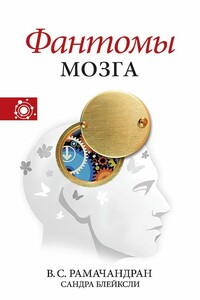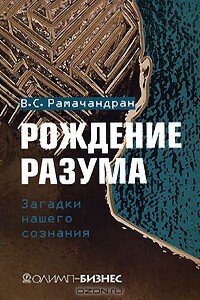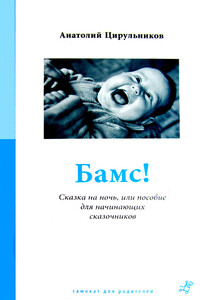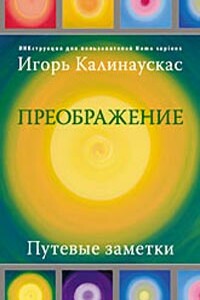Мозг рассказывает. Что делает нас людьми - страница 171
Oberman, L. М., & Ramachandran, V. S. (2007b). The simulating social mind: The role of the mirror neuron system and simulation in the social and communicative deficits of autism spectrum disorders. Psychological Bulletin, 133(2), 310–327.
Oberman, L. М., & Ramachandran, V. S. (2008). How do shared circuits develop? Behavioral and Brain Sciences, 31,1-58.
Oberman, L. М., Ramachandran, V. S., & Pineda, J. A. (2008). Modulation of mu suppression in children with autism spectrum disorders in response to familiar or unfamiliar stimuli: the mirror neuron hypothesis. Neuropsychologia, 46, 1558–1565.
Oberman, L. М., Winkielman, P., & Ramachandran, V. S. (2007). Face to face: Blocking facial mimicry can selectively impair recognition of emotional faces. Social Neuroscience, 2(3), 167–178.
Palmeri, T. J., Blake, R., Marois, R., Flanery, M. A., & Whetsell, W., Jr.
(2002). The perceptual reality of synesthetic colors. Proceedings of the National Academy of Sciences of the USA, 99,4127–4131.
Penfield, W., & Boldrey, E. (1937). Somatic motor and sensory representation in the cerebral cortex of man as studied by electrical stimulation. Brain, 60, 389–443.
‘Pettigrew, J. D., & Miller, S. M. (1998). A “sticky” interhemispheric switch in bipolar disorder? Proceedings of the Royal Society of London, Series B: Biological Sciences, 265(1411), 2141–2148.
Pinker, S. (1997). How the mind works. New York: W. W. Norton.
’Posner, М., & Raichle, M. (1997). Images of the mind. New York: W. H. Freeman.
'Premack, D., & Premack, A. (2003). Original intelligence. New York: McGraw-Hill.
’Quartz, S., & Sejnowski, T. (2002). Liars, lovers and heroes. New York: William Morrow.
Ramachandran, V. S. (1993). Behavioral and magnetoencephalographic correlates of plasticity in the adult human brain. Proceedings ofthe National Academy of Sciences of the USA, 90,10413-10420.
Ramachandran, V. S. (1994). Phantom limbs, neglect syndromes, repressed mem-iories, and Freudian psychology. International Review of Neurobiology, 37,291–333.
Ramachandran, V. S. (1996, October). Decade of the brain. Symposium organized by the School of Social Sciences, University of California, San Diego, La Jolla.
Ramachandran, V. S. (1998). Consciousness and body image: Lessons from phantom limbs, Capgras syndrome and pain asymbolia. Philosophical Transactions of the Royal Society of London, Series B: Biological Sciences, 353(1377), 1851–1859.
Ramachandran, V. S. (2000, June 29). Mirror neurons and imitation as the driving force behind “the great leap forward” in human evolution. Edge: The Third Culture, Retrieved from http://www.edge.org/3rd culture/ramachandran/rama chandran_ pl.html., pp. 1–6.
Ramachandran, V. S. (2003). The phenomenology of synaesthesia. Journal of Consciousness Studies, 10(8), 49–57.
Ramachandran, V. S. (2004). The astonishing Francis Crick. Perception, 33(10), 1151–1154.
Ramachandran, V. S. (2005). Plasticity and functional recovery in neurology. Clinical Medicine, 5(4), 368–373.
Ramachandran, V. S., & Altschuler, E. L. (2009). The use of visual feedback, in particular mirror visual feedback, in restoring brain function. Brain, 132(7), 16.
Ramachandran, V. S., Altschuler, E. L., & Hillyer, S. (1997). Mirror agnosia. Proceedings of the Royal Society of London, Series B: Biological Sciences, 264,645–647.
Ramachandran, V. S., & Azoulai, S. (2006). Synesthetically induced colors evoke apparent-motion perception. Perception, 35(11), 1557–1560.
Ramachandran, V. S., & Blakeslee, S. (1998). Phantoms in the brain. New York: William Morrow.
Ramachandran, V. S., & Brang, D. (2008). Tactile-emotion synesthesia. Neurocase, 14(5), 390–399.
Ramachandran, V. S., & Brang, D. (2009). Sensations evoked in patients with amputation from watching an individual whose corresponding intact limb is being touched. Archives of Neurology, 66(10), 1281–1284.
Ramachandran, V. S., Brang, D., & McGeoch, P. D. (2009). Size reduction using Mirror Visual Feedback (MVF) reduces phantom pain. Neurocase, 15(5), 357–360.
Ramachandran, V. S., & Hirstein, W. (1998). The perception of phantom limbs. The D. O. Hebb lecture.





